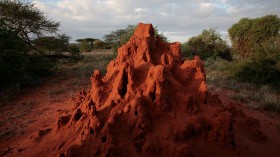According to a charitable organization, the survival of the hedgehog during its hibernation is harmed when used Halloween pumpkins are dumped outside.
After Halloween, a Lincolnshire-based charity is pleading with people not to leave abandoned pumpkins in the countryside.
According to Grantham-based The Woodland Trust, some people think that feeding animals would help but it is better to turn food scraps into compost, which will benefit trees.
The charity has cautioned, though, that hedgehogs can die from eating pumpkins.
Instead, Paul Bunton, the communication and engagement officer for the Woodland Trust, advised people to either compost them at home or hang the used Halloween pumpkins from a tree to feed the birds.
According to the charity, hundreds and hundreds of pumpkins are thrown into UK woodlands each year.
Detrimental Donations
According to Bunton, this is the case because people mistakenly believe they are helping the wildlife or maybe giving them a little boost for the fall. Eating discarded Halloween pumpkins can be very negative for wildlife.
On its social media pages, The Woodland Trust has published a video explaining the effects pumpkins have on wildlife.
🎃Are you pumpkin carving for #Halloween?#Pumpkins can cause serious illness in hedgehogs, and can disturb sensitive #woodland soils🌳
— Woodland Trust🌳 (@WoodlandTrust) October 26, 2022
Watch our video to learn more about how to reuse and recycle your jack o'lanterns this Halloween: https://t.co/WeTFbXkyPh#LoveYourWoods pic.twitter.com/6T0K1bniZh
It states that Halloween falls around the time hedgehogs are trying to bulk up for hibernation, according to Trevor Weeks, the East Sussex Wildlife Rescue and Ambulance Service founder.
He also said that hedgehogs get diarrhea from eating pumpkins. The wildlife will suffer from weight loss, dehydration, and difficulty surviving hibernation as a result.
BBC reports that The Woodland Trust has suggested that Pumpkins should rather be composted at home, used as fall-themed bird feeders, or given to zoos or farms as animal feed.
Read also: Sustainable Halloween: Could it be a Trick or an Actual Treat?
Social Media-Powered Myth
Meanwhile, according to The Telegraph, after October 31st, about 8,000,000 pumpkins are reportedly thrown out in Britain, with thousands being dumped in forests by well-meaning individuals who believe they are helping wildlife.
Kate Wollen, Forestry England assistant ecologist, urged people not to leave pumpkins in the wilderness for wildlife to eat, although many social media posts encourage doing so.
She explained that although some wildlife might indeed enjoy a quick treat made with easy-to-access pumpkins, which are not native to the woodland, others, like hedgehogs, may become very ill as a result.
She added that giving pumpkins-or any other non-native food-to foxes, deer, badgers, boars, or birds can make them ill and spread disease.
Wollen continued to explain that, additionally, candles and other decorations are frequently placed inside pumpkins. Animals that consume the pumpkins could eat a non-edible object and be killed as a result, Sky News reports.
Reusing Halloween Pumpkins
In addition to bringing unwanted pests, the perishable decorations can also leave a sticky and slimy mess that requires time and money to clean up, according to Vicky Bolton of the Woodland Trust.
Bolton suggests making soup or stew out of leftover Halloween pumpkins or creating a bird feeder to feed birds throughout the winter. She continued by saying that individuals can contribute by recycling pumpkins at home and protecting the woodlands for trees and wildlife.
Related article: No Pumpkin For Halloween: Heat Waves Threatens the Holiday Staple
© 2024 NatureWorldNews.com All rights reserved. Do not reproduce without permission.





